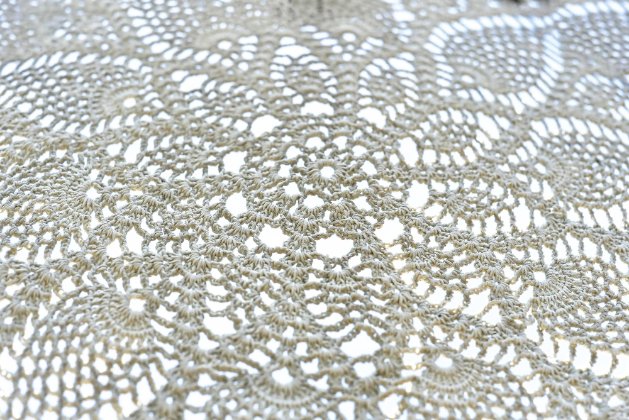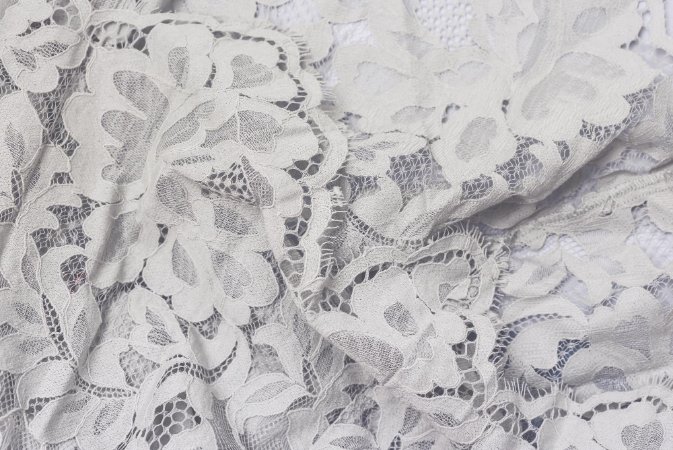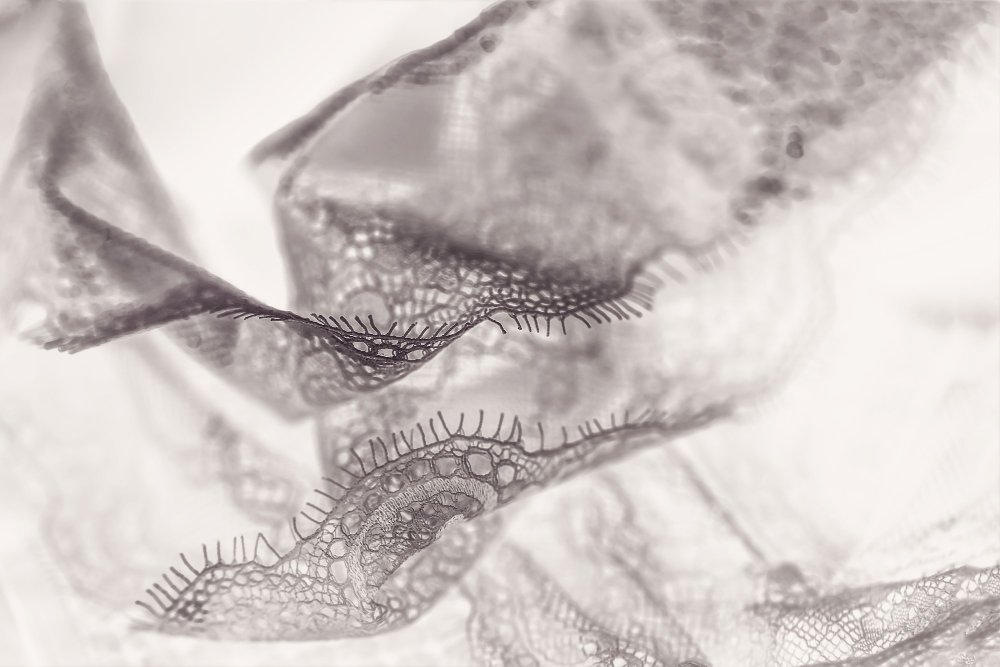From traditional handcraft to modern applications: Everything you need to know about choosing, using, and caring for crochet lace fabric
Table of Contents
What Is Crochet Lace Fabric?
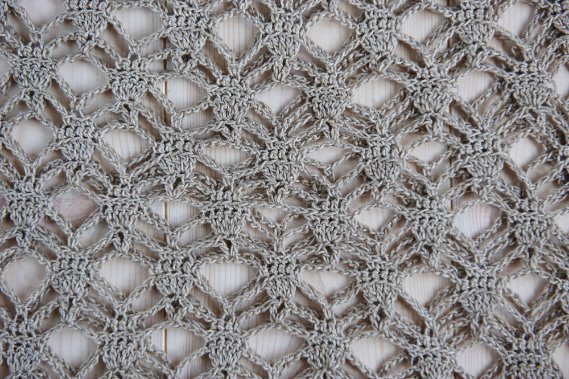
Detailed view of traditional crochet lace fabric showcasing the intricate patterns and open-work design that makes this textile so distinctive
Crochet lace fabric represents one of the most versatile and beautiful textile arts, combining traditional handcraft techniques with modern manufacturing capabilities. This delicate fabric features intricate patterns created through interlocking loops of yarn, resulting in an open, airy texture that’s both decorative and functional.
What is lace crochet called?
Crochet lace is also known by several traditional names including “filet crochet” (when worked in a mesh pattern), “Irish crochet” (featuring raised motifs), and “thread crochet” when made with fine cotton threads. In historical contexts, it’s sometimes called “crochet lace work” or simply “lace crochet.”
Unlike other lace fabric types, crochet lace uses a single hooked needle to create its patterns. This technique allows for incredible design flexibility, from delicate floral motifs to bold geometric patterns. The resulting fabric maintains structural integrity while offering the feminine elegance that makes lace so appealing.
Key Characteristics
What sets crochet lace apart from other textiles is its unique combination of durability and delicacy. The interlocking stitch structure creates surprisingly strong fabric, while the open patterns maintain an elegant, lightweight feel. This makes it ideal for both fashion applications and home decor projects.
Floral Motifs
Traditional patterns featuring roses, daisies, and botanical designs that create romantic, feminine appeal.
Geometric Shapes
Modern angular patterns with clean lines perfect for contemporary fashion and minimalist decor.
Filet Patterns
Grid-based designs that create pictorial images through filled and open squares.
Irish Crochet
Dimensional raised motifs connected by mesh backgrounds, offering rich texture and depth.
What do they call someone who crochets?
A person who crochets is called a “crocheter” (pronounced “crow-SHAY-er”). Some regions also use “crochetier,” though this is less common. The term applies to both hobbyists and professional artisans who create crochet work.
History and Cultural Significance
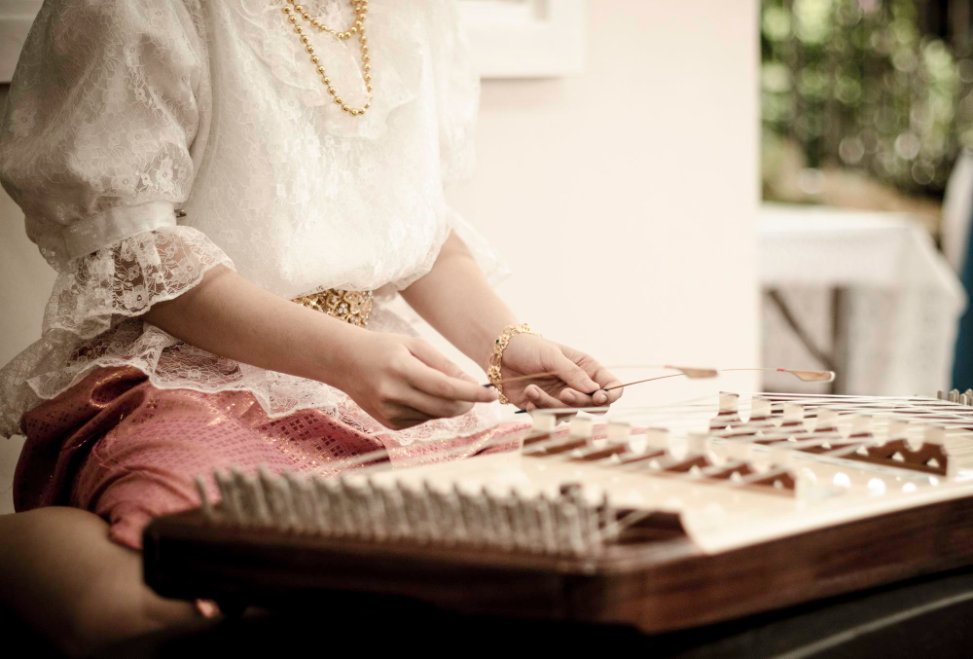
Historical examples of crochet lace demonstrating the rich cultural heritage and artistic traditions of this timeless textile craft
Understanding the rich history of crochet lace deepens appreciation for this enduring textile art. From its origins in ancient techniques to its current renaissance in sustainable fashion, crochet lace continues to evolve while honoring its traditional roots.
Origins and Evolution
What is the old name for crochet?
Historically, crochet was known by several names including “shepherd’s knitting,” “crochet work,” and in some regions, “tambour work” (though tambour technically used a different hook). The word “crochet” comes from the French term meaning “small hook.” Before standardized terminology, regional names varied widely across Europe.
The technique of crochet lace developed during the 19th century as an accessible alternative to expensive needle laces. Irish crochet, in particular, gained prominence during the potato famine as a means of economic survival for families who could create valuable lace for export.
Historical Impact
According to textile historians, crochet represented a democratization of luxury textile arts. What was once available only to wealthy families became achievable through skill and creativity, making decorative textiles accessible to working-class artisans.
Modern Revival and Innovation
Can crocheting be profitable?
Yes, crocheting can be profitable through various channels: selling finished pieces at craft fairs and online, teaching classes and workshops, creating and selling patterns, commissioned custom work, and content creation through blogs or videos. Success depends on skill level, market understanding, and business acumen. Many artisans combine multiple revenue streams for sustainable income.
Today’s crochet renaissance embraces both traditional techniques and innovative applications. Modern technology enables pattern sharing globally, while sustainable fashion movements have renewed interest in handmade textiles. Social media platforms have created new communities of makers sharing techniques and inspiring creativity.
Who is the mother of crochet?
While no single person can claim to be the “mother of crochet,” several figures significantly influenced its development. Riego de la Branchardiere is often credited with elevating Irish crochet to an art form and developing many foundational techniques. Mademoiselle Zelie de Lubin also contributed significantly to early pattern development and standardization.
What is the oldest crochet technique?
The oldest recognizable crochet techniques include simple chain stitch and single crochet, which evolved from earlier needlework methods. Filet crochet, with its simple grid structure, represents one of the earliest organized pattern systems. Archaeological evidence suggests similar techniques existed in ancient Egypt and China, though modern crochet as we know it developed primarily in 19th century Europe.
Types and Patterns
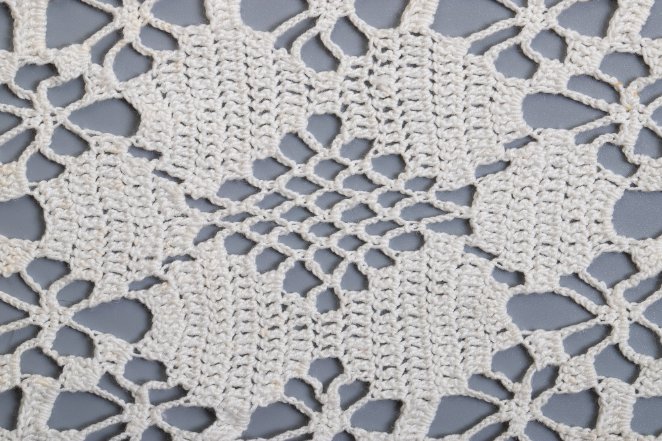
Collection of different crochet lace patterns demonstrating the variety of techniques from traditional filet work to modern geometric designs
Traditional Crochet Techniques
Traditional crochet lace encompasses several distinct techniques, each with its own character and applications. Understanding these methods helps you choose the right type for your specific project needs.
| Technique | Characteristics | Best Uses | Difficulty Level |
|---|---|---|---|
| Filet Crochet | Grid-based patterns with filled and open squares | Curtains, table runners, wall hangings | Beginner to Intermediate |
| Irish Crochet | Raised motifs connected by mesh backgrounds | Wedding gowns, evening wear, heirloom pieces | Advanced |
| Bruges Lace | Tape-like bands forming continuous patterns | Collars, cuffs, decorative trim | Intermediate |
| Thread Crochet | Fine cotton thread creating delicate patterns | Doilies, edgings, delicate garments | Intermediate to Advanced |
What is the difference between crochet and Irish lace?
Irish crochet is actually a specific type of crochet lace that originated in Ireland during the 1840s. While regular crochet lace can be worked in continuous rows, Irish crochet creates individual motifs (flowers, leaves, shamrocks) that are later connected with mesh backgrounds. Irish crochet typically features more dimensional, raised elements and is considered more complex than standard crochet lace patterns.
Is filet crochet lace?
Yes, filet crochet is definitely considered a type of lace. It creates an open, mesh-like fabric using chains and double crochet stitches arranged in a grid pattern. The technique produces pictorial designs by filling or leaving open specific squares in the grid. Filet crochet became particularly popular for household linens and decorative panels.
Modern Pattern Innovations
2025 Crochet Lace Trends
This year’s trends focus on sustainability and versatility. Eco-friendly yarns, oversized statement pieces, and color-blocking techniques are dominating both fashion runways and home decor markets. Modern crocheters are also experimenting with mixed materials, incorporating metallic threads and unconventional fibers.
Modern crochet lace has evolved beyond traditional white cotton threads. Today’s artisans work with bamboo fibers, recycled materials, and even incorporating smart textiles that respond to environmental changes. These innovations open new possibilities for both fashion and functional applications.
Contemporary Pattern Categories
- Minimalist Geometric: Clean lines and simple shapes perfect for modern interiors
- Bohemian Florals: Oversized blooms and organic patterns for festival fashion
- Architectural Motifs: Building-inspired patterns for statement home pieces
- Asymmetrical Designs: Non-traditional layouts that create visual interest
What is waterfall crochet?
Waterfall crochet is a modern technique that creates a flowing, cascading effect in the fabric. It uses varying stitch heights and strategic increases/decreases to mimic the movement of falling water. This technique is particularly popular for shawls, scarves, and decorative wall hangings where the draping effect adds visual drama.
What is Bavarian crochet?
Bavarian crochet, also known as Bavarian stitch, creates a unique wavy, ripple effect using clusters of stitches worked in specific color sequences. This technique produces thick, textured fabric with a distinctive striped appearance. While not traditionally considered “lace,” modern adaptations use lighter weight yarns to create more open, lace-like versions that maintain the characteristic wavy pattern.
Materials and Construction
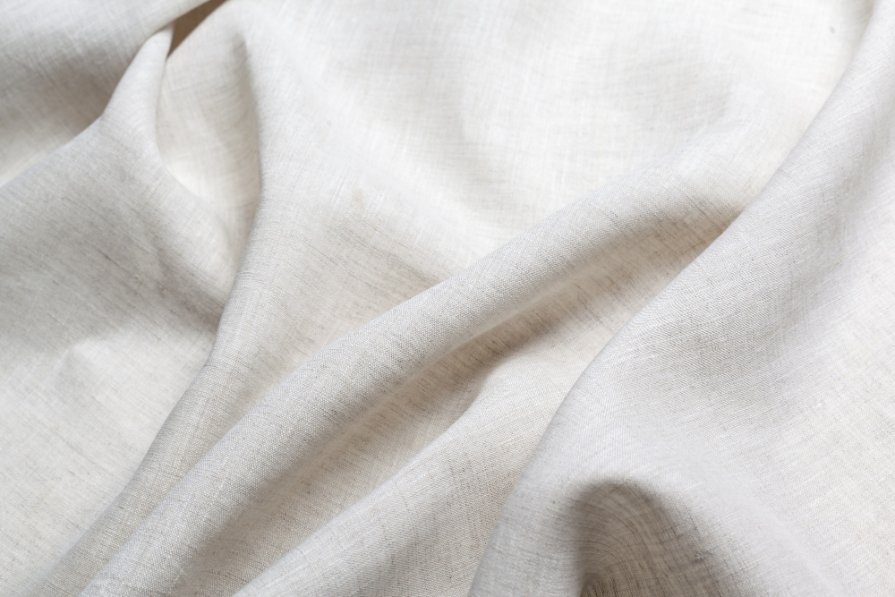
Various cotton threads and fibers used in crochet lace construction, showing the range of materials from fine thread to heavier yarns
Fiber Types and Properties
The choice of fiber dramatically affects both the appearance and performance of crochet lace fabric. Modern manufacturers offer an impressive range of options, from traditional cotton fibers to innovative synthetic blends.
| Fiber Type | Properties | Best Applications | Care Requirements |
|---|---|---|---|
| Cotton | Breathable, absorbent, gets softer with washing | Summer garments, baby items, home linens | Machine washable, can be ironed |
| Polyester | Wrinkle-resistant, colorfast, quick-drying | Outdoor decor, activewear, travel items | Easy care, low heat settings |
| Silk | Lustrous, drapes beautifully, temperature regulating | Evening wear, luxury accessories, bridal items | Hand wash or dry clean only |
| Bamboo | Antimicrobial, UV protective, eco-friendly | Activewear, baby clothing, sustainable fashion | Gentle cycle, air dry |
What is the best thread for crochet lace?
For traditional crochet lace, size 10 to 30 cotton thread provides the best balance of workability and durability. Mercerized cotton offers superior strength and sheen. For beginners, size 10 thread is easier to work with, while experienced crocheters often prefer size 20-30 for finer, more delicate results. Popular brands include DMC Cebelia, Aunt Lydia’s Classic Crochet Thread, and Lizbeth thread.
Construction Methods
Understanding how crochet lace is constructed helps you appreciate its durability and select the right type for your needs. The basic technique involves creating loops with a hooked needle, but variations in stitch combination create distinctly different fabric characteristics.
Crochet Lace Construction Process
Choose design based on intended use and skill level
Select appropriate yarn/thread and hook size
Establish base chain or ring for pattern start
Follow stitch sequence to build up design
Block, edge finish, and quality check
Quality Indicators
When evaluating crochet lace fabric, look for these quality markers:
- Even tension: Consistent stitch size throughout the piece
- Clean edges: Neat beginning and ending points
- Pattern clarity: Well-defined motifs without distortion
- Structural integrity: No loose threads or weak connection points
Technical Comparisons
Understanding how crochet lace relates to other textile techniques helps you make informed decisions for your projects. Each method offers unique advantages and aesthetic qualities.
Crochet vs. Other Lace Types
What is the difference between crochet lace and knit lace?
Crochet lace uses a single hook to create interlocking loops, while knit lace uses two or more needles to create interconnected stitches. Crochet lace tends to be more structured and stable, with clearly defined pattern elements. Knit lace offers more drape and elasticity, making it better for fitted garments. Crochet allows for more three-dimensional motifs, while knitting excels at flowing, fabric-like textures.
| Technique | Tools Required | Fabric Characteristics | Learning Curve |
|---|---|---|---|
| Crochet Lace | Single hook, yarn/thread | Structured, defined patterns, stable | Moderate |
| Knit Lace | Two needles, yarn | Flowing, elastic, drapeable | Challenging |
| Tatting | Shuttle or needle, thread | Dense rings and chains, very stable | Difficult |
| Bobbin Lace | Pillow, bobbins, pins | Fine, continuous patterns | Advanced |
What is the difference between tatting lace and crochet lace?
Tatting creates lace using a shuttle or needle to form rings and chains through a series of double stitches, resulting in a very dense, stable fabric with distinctive circular motifs. Crochet lace uses a hook to create various stitch combinations, allowing for more varied textures and larger-scale patterns. Tatting produces finer, more delicate results, while crochet offers greater design flexibility and faster completion times.
Which looks better, crochet or knitting?
Both techniques have distinct aesthetic qualities. Crochet creates more defined, structured patterns with clear geometric shapes, while knitting produces flowing, fabric-like textures. Crochet excels for decorative motifs and dimensional effects, while knitting offers superior drape for fitted garments. The choice depends on your project goals and personal preference.
Skill Level and Learning
Can beginners learn lace crochet?
Absolutely! Begin with simple patterns using larger hooks and thicker yarn to build confidence. Start with basic filet crochet patterns that use only chain stitches and double crochet. Once comfortable with basic techniques, progress to more complex patterns gradually. Many online tutorials and local classes cater specifically to beginners interested in lace work.
What is the most difficult crochet stitch?
The most challenging crochet techniques include Bavarian stitch (complex color work and stitch manipulation), intricate cable stitches that require working around posts, and advanced lacework combining multiple stitch types in precise sequences. Irish crochet motifs requiring dimensional elements also rank among the most difficult. However, difficulty is relative to experience level and practice.
Fashion Applications
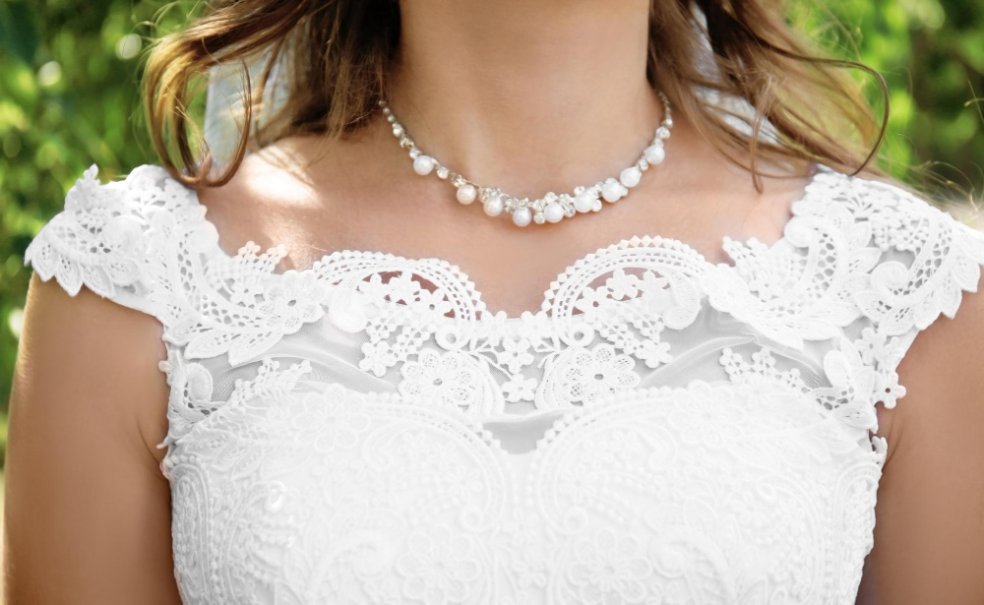
Beautiful crochet lace dress demonstrating the elegant fashion applications and versatility of crochet lace in modern clothing design
Garment Design Ideas
Crochet lace fabric offers incredible versatility in fashion design. From delicate accents to statement pieces, this textile adapts to various style aesthetics while maintaining its inherent elegance. Modern designers are pushing boundaries by combining traditional lace techniques with contemporary silhouettes.
Bridal Wear
Delicate overlays, cathedral veils, and intricate bodice details that create heirloom-quality pieces for special occasions.
Casual Tops
Breathable summer blouses, tank tops with lace panels, and layering pieces perfect for everyday elegance.
Evening Wear
Sophisticated gowns featuring strategic lace placement, cocktail dresses with textural interest, and elegant wraps.
Accessories
Scarves, shawls, gloves, and headpieces that add refined finishing touches to any outfit.
When incorporating crochet lace into garments, consider the fabric’s natural drape and stretch properties. Unlike rigid Chantilly lace or structured Venise lace, crochet lace offers more flexibility, making it ideal for designs that require movement and comfort.
Styling and Trends
2025 Styling Trends
This year emphasizes sustainable fashion choices and versatile pieces. Crochet lace is being styled in unexpected ways: layered over solid colors for contrast, mixed with denim for casual elegance, and incorporated into athleisure wear for technical yet feminine aesthetics. The focus is on investment pieces that transition seamlessly between seasons and occasions.
Modern styling approaches emphasize the contrast between crochet lace’s delicate appearance and structured silhouettes. Pairing an airy crochet lace top with tailored trousers creates visual balance, while layering lace over solid fabrics adds depth without overwhelming the overall look.
Seasonal Styling Guidelines
- Spring/Summer: Light colors, breathable weaves, minimal layering
- Fall/Winter: Darker tones, structured pieces, strategic layering with winter fabrics
- Transitional: Neutral colors, medium-weight pieces, versatile silhouettes
For children’s clothing, crochet lace offers a perfect balance of elegance and practicality. The sturdy construction withstands active play while maintaining the special occasion appeal parents love.
Home Decor Uses
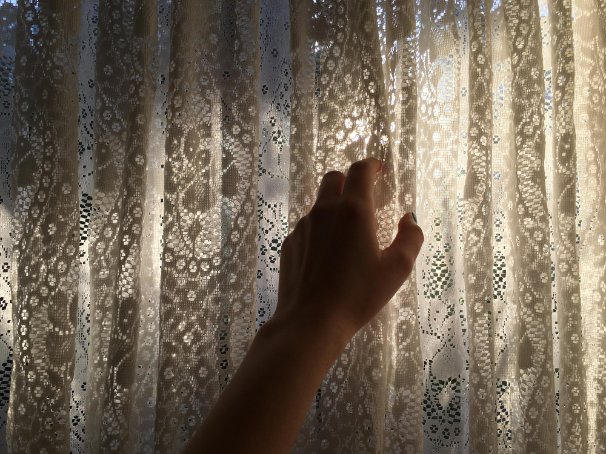
Delicate crochet lace curtains filtering natural light, demonstrating the beautiful home decor applications of this versatile fabric
Crochet lace fabric brings timeless elegance to interior spaces while offering practical benefits like light filtration and air circulation. Its versatility makes it suitable for various decorative applications, from traditional cottage styles to modern minimalist interiors.
Window Treatments
Crochet lace curtains and panels provide privacy while allowing natural light to filter through their open patterns. The intricate designs cast beautiful shadows that change throughout the day, creating dynamic visual interest. For optimal results, choose patterns that complement your room’s scale and existing decor elements.
Light Filtering Properties
Different crochet patterns offer varying levels of privacy and light control. Dense patterns like moss stitch provide more coverage, while open filet patterns maximize light transmission. Consider your specific needs when selecting window treatments.
Table and Furniture Accents
Table runners, placemats, and furniture throws in crochet lace add sophisticated texture to dining and living spaces. These pieces work particularly well in traditional and vintage-inspired interiors, but can also provide interesting contrast in contemporary settings.
Popular Home Decor Applications
- Curtain panels and valances for windows and doorways
- Table linens including runners, placemats, and overlays
- Pillow covers and throws for textural interest on furniture
- Wall hangings as artistic focal points
- Lampshade covers for ambient lighting effects
Creating Ambiance with Texture
The three-dimensional quality of crochet lace creates unique lighting effects and visual depth. When backlit, intricate patterns cast delicate shadows that add movement and interest to walls and surfaces. This quality makes crochet lace particularly effective for creating cozy, intimate atmospheres in bedrooms and living areas.
DIY and Attachment Techniques
Adding crochet lace to existing garments or creating new pieces requires specific techniques to ensure professional-looking results. Understanding proper attachment methods prevents damage to both the lace and base fabric.
How to Add Crochet Lace to Fabric
The key to successfully incorporating crochet lace lies in matching the stretch and care requirements of both fabrics. Pre-treat both materials using the same method to prevent differential shrinkage that could cause puckering.
Learn two techniques for adding crochet edging to fabric using sewn chain stitch and blanket stitch methods
Lace Attachment Process
Mark placement and cut lace with seam allowances
Pre-treat both fabrics and press if needed
Secure lace in position with fine pins
Hand baste for secure positioning during sewing
Sew using appropriate method and remove basting
Attachment Methods
How to Sew Crochet Lace onto Fabric
Use a quality sewing machine with a ballpoint or stretch needle to prevent snagging. Set the machine to a narrow zigzag stitch or use a serger for stretchy fabrics. Test stitching on scraps first to ensure compatibility.
How to Attach Lace to Fabric Without Sewing
For temporary applications or delicate fabrics, use fabric adhesive specifically designed for textiles. Apply thin, even layers to avoid stiffening the lace. Fusible interfacing provides another no-sew option, though it may alter the lace’s drape and texture. Heat-activated bonding tape works well for hems and straight edges.
Can you attach crochet to fabric?
Yes, crochet lace attaches beautifully to most fabric types when proper techniques are used. The key considerations include matching stretch properties, using appropriate needles and threads, and selecting attachment methods that don’t distort either material. Both machine and hand-sewing methods work effectively.
Hand-Sewing Techniques
How to do the whipstitch?
The whipstitch is a simple overcast stitch perfect for attaching lace edges. Work from right to left, bringing the needle up through both fabrics about 1/8 inch from the edge, then over the edge and up again 1/8 inch to the left. Keep stitches evenly spaced and maintain consistent tension to prevent puckering.
Step-by-step whipstitch tutorial showing proper hand-sewing technique for attaching lace to fabric edges
Hand-sewing offers more control when working with delicate lace. Use sharp embroidery needles and high-quality thread that matches the lace fiber content. Work in good lighting to avoid straining your eyes with the intricate patterns.
Professional Tips
- Always interface lightweight fabrics before attaching heavy lace
- Use walking foot attachments for even feeding of multiple layers
- Press seams carefully using pressing cloths to protect lace texture
- Consider the final garment’s care requirements when choosing attachment methods
Care and Maintenance
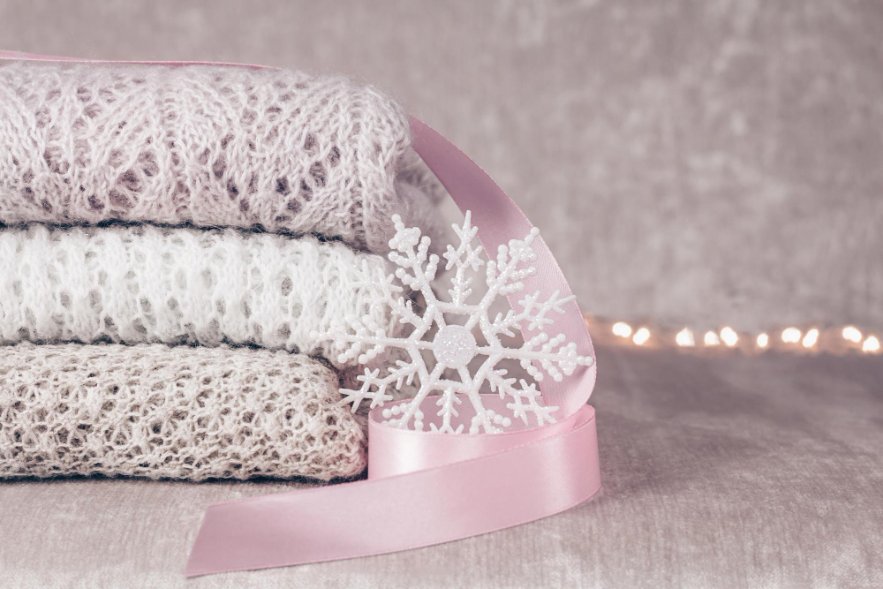
Demonstration of proper care techniques for crochet lace fabric, showing gentle washing methods and storage practices
Proper care extends the life of crochet lace fabric significantly. The open structure that gives crochet lace its beauty also requires thoughtful handling to prevent damage and maintain its shape.
Washing Guidelines
Most crochet lace benefits from gentle treatment, regardless of fiber content. Hand washing in cool water with mild detergent provides the safest cleaning method. For machine-washable pieces, use a mesh laundry bag and the delicate cycle to protect the fabric structure.
| Fiber Type | Washing Method | Drying Instructions | Special Considerations |
|---|---|---|---|
| Cotton | Hand wash or gentle machine cycle | Lay flat or hang to air dry | Can be pressed with steam iron |
| Wool | Hand wash in cool water only | Block to measurements while damp | Never wring or twist wet fabric |
| Synthetic | Machine washable, gentle cycle | Low heat or air dry | Avoid fabric softeners |
| Silk | Hand wash or dry clean | Air dry away from direct sunlight | Store flat to prevent stretching |
Storage and Preservation
Proper storage prevents damage and maintains the fabric’s structure. For delicate pieces, store flat between acid-free tissue paper. Hanging works for sturdier items, but use padded hangers to prevent stretching. Avoid plastic bags which can trap moisture and cause mildew.
Buying Guide
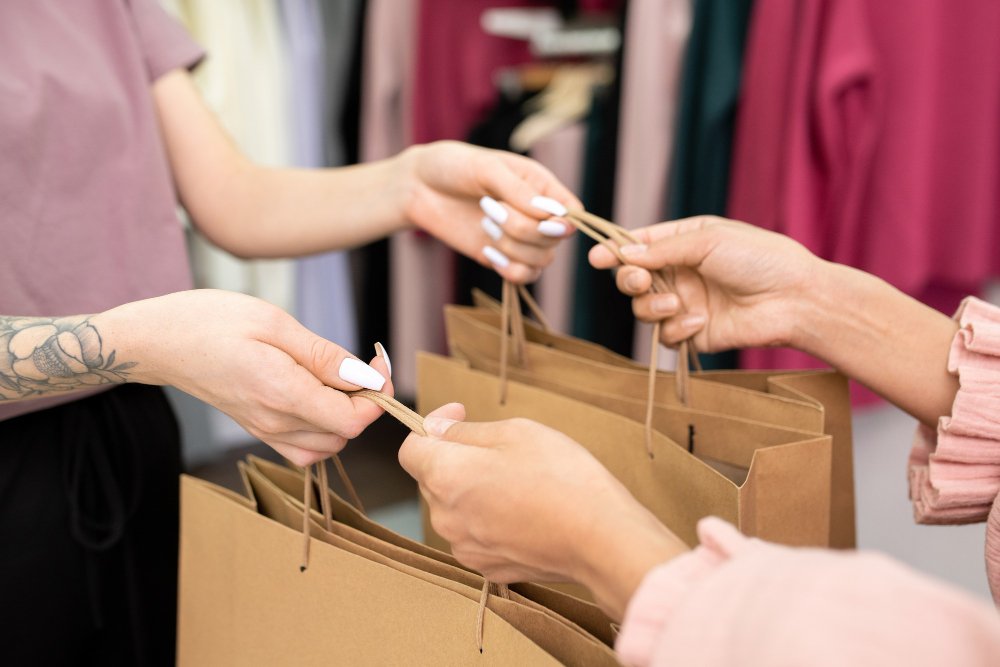
Various quality levels and types of crochet lace fabric, helping buyers understand the differences in construction and materials
Selecting quality crochet lace requires understanding both the technical aspects and intended use. Whether purchasing handmade pieces or machine-manufactured fabric, certain quality indicators ensure you get the best value for your investment.
Quality Assessment
Examine the fabric closely for consistent stitch formation and secure connections between pattern elements. High-quality crochet lace maintains its pattern integrity even when gently stretched. The best pieces show even tension throughout, with no puckering or loose areas.
Price Range Expectations
Handmade crochet lace typically ranges from $15-50 per yard for cotton pieces, while luxury fibers like silk can command $75-200 per yard. Machine-made alternatives offer similar aesthetics at $3-15 per yard, making them accessible for larger projects like curtains or table linens.
Choosing the Right Type
Match the lace characteristics to your intended use. Delicate thread lace works beautifully for small sewing projects and details, while heavier cotton lace suits home decor applications. Consider maintenance requirements based on how frequently the item will be used or cleaned.
Key Selection Criteria
- Fiber content: Choose based on care requirements and durability needs
- Pattern scale: Match to project size and visual impact desired
- Edge finishing: Look for clean, secure borders that won’t unravel
- Color fastness: Test for bleeding if planning to wash with other items
Sustainability and Environmental Impact
As environmental consciousness grows, crochet lace offers several sustainable advantages over mass-produced textiles. Understanding these benefits helps you make eco-friendly choices in your textile selections.
Eco-Friendly Benefits
Handmade crochet lace requires no electricity for production and generates minimal waste. The durability of well-made pieces means they can last for decades with proper care, reducing the need for replacement. Many traditional fibers like cotton, linen, and wool are renewable and biodegradable.
Sustainable Fiber Trends 2025
This year sees increased demand for organic cotton, bamboo, and recycled fibers in crochet applications. Artisans are also experimenting with locally-sourced materials and natural dyes to reduce transportation impacts. According to industry reports, the “slow fashion” movement particularly embraces handmade lace for its longevity and timeless appeal.
Caring for Longevity
Proper care extends the environmental benefit of crochet lace by maximizing its useful life. Regular maintenance prevents minor issues from becoming major problems that might require replacement.
- Use eco-friendly detergents when washing
- Air dry to conserve energy and prevent heat damage
- Store properly to prevent pest damage or deterioration
- Repair minor damage promptly to prevent spread
Frequently Asked Questions
Crochet lace is created with a single hook, allowing for more three-dimensional motifs and structural stability. Each stitch is individually formed, creating subtle variations that give handmade pieces character. Machine-made lace can replicate many crochet patterns but lacks the individual touch and structural integrity of hand-crocheted pieces.
For traditional lace work, use thread weights ranging from size 3 (heavy) to size 30 (very fine). Beginners should start with size 10 thread and size 7 steel hook. For modern lace garments, DK or worsted weight yarn creates more casual, wearable pieces. Always check your pattern recommendations first.
This depends on the fiber content and construction. Cotton crochet lace generally handles machine washing on gentle cycles using mesh bags for protection. Wool, silk, or very delicate pieces require hand washing. Always test a small hidden area first and follow specific care instructions for your piece.
Time varies dramatically based on complexity, size, and skill level. A simple doily might take 4-8 hours, while an elaborate tablecloth could require 100+ hours. Irish crochet motifs may take several hours each, plus assembly time. Modern crochet patterns often include time estimates to help with project planning.
Shetland lace is a traditional knitting technique from Scotland’s Shetland Islands, not a crochet technique. It creates extremely fine, gossamer-weight shawls using complex patterns that often incorporate natural motifs. While beautiful, Shetland lace requires knitting rather than crochet skills and produces different fabric characteristics than crochet lace.
A person who crochets is called a “crocheter” (pronounced “crow-SHAY-er”). Some regions also use “crochetier,” though this is less common. The term applies to both hobbyists and professional artisans who create crochet work.
Key Takeaways
- Crochet lace combines traditional craftsmanship with modern versatility for both fashion and home applications
- Understanding fiber properties helps you select the right type for your specific needs and care requirements
- Proper attachment techniques ensure professional results when incorporating lace into existing projects
- Quality varies significantly between handmade and machine-produced options, with corresponding price differences
- Sustainable practices in production and care extend the environmental benefits of choosing crochet lace
Conclusion
Crochet lace fabric represents a perfect fusion of traditional artistry and contemporary functionality. Whether you’re drawn to its delicate beauty for fashion applications, its practical elegance for home decor, or its sustainable production methods, crochet lace offers unmatched versatility in the textile world.
The enduring appeal of crochet lace lies in its ability to adapt to changing trends while maintaining its timeless character. From the intricate Irish crochet techniques that supported families during difficult times to today’s innovative sustainable fashion applications, this remarkable textile continues to evolve and inspire.
As you explore crochet lace for your projects, remember that quality and proper care determine the longevity of your investment. Whether selecting cotton versus synthetic options or learning proper attachment techniques, taking time to understand the fundamentals ensures successful results.
The future of crochet lace looks bright, with growing interest in handmade textiles, sustainable fashion choices, and the therapeutic benefits of creating beautiful things by hand. Whether you’re a seasoned crafter or someone discovering the beauty of lace for the first time, this versatile fabric offers endless possibilities for creative expression and practical application.
Final Recommendations
- Start simple: Begin with basic patterns and familiar fibers to build confidence
- Invest in quality: Well-made tools and materials produce better results and last longer
- Practice proper care: Good maintenance habits preserve your lace for years of enjoyment
- Experiment creatively: Don’t be afraid to combine traditional techniques with modern applications
- Join communities: Connect with other enthusiasts for inspiration, support, and skill development
Remember that every piece of crochet lace tells a story of patience, skill, and creativity. Whether you’re creating heirloom pieces for future generations or adding elegant touches to everyday items, you’re participating in a rich textile tradition that continues to bring beauty and craftsmanship to our modern world.
Helpful Resources
Use our Interactive Fabric Selector Tool to find the perfect crochet lace for your project. Get personalized care instructions with our Fabric Care Generator, and explore our Lace Identification Quiz to test your knowledge of different lace types.
For sewing projects, try our Fabric Yardage Calculator to determine exactly how much crochet lace you need, or use our Sewing Cost Calculator to budget your entire project.

